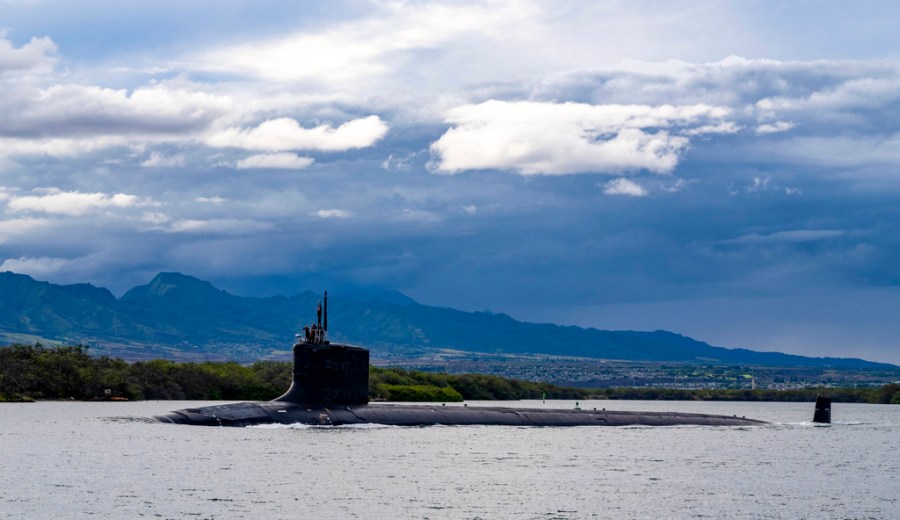
According to recent public opinion polling, a majority of American voters think there is at least a 50-50 chance of war with China happening within the next 10 years. In the same poll, almost 80 percent of voters believe we should do everything we can to prevent a war from happening.
They have good reason for concern.
In recent years, China’s Communist Party leaders have increased their aggressive actions around the world, hacking into America’s telecommunications networks, setting up secret police stations to intimidate dissidents overseas, and ramping up military and economic coercion of China’s neighbors.
Earlier this month, a Chinese-crewed vessel cut an undersea cable that links Taiwan to the internet. In December, China’s military staged its largest-ever exercise around Taiwan, deploying 134 warplanes and as many as 100 ships to simulate a blockade of the self-governing island and establishing control of the “First Island Chain” — a string of islands running from Japan to the Philippines.
Fortunately, China’s leaders still hesitate to initiate an outright conflict. A lack of warfighting experience, persistent corruption among China’s military leadership, and the prospect of launching a complex assault across a maritime expanse patrolled by American submarines — which Chinese commentators call a major U.S. “asymmetric advantage” — deter them from seizing territory from Taiwan, the Philippines or other countries in the region.
Unfortunately, the Chinese Communist Party is actively trying to overcome these capability gaps. To do so, it is pursuing the most extensive military buildup since World War II, and top leader Xi Jinping has set a goal for China’s military to be capable of invading Taiwan by 2027.
Central to these efforts is countering America’s longstanding advantages at sea. By 2030, China’s navy is projected to have 440 ships, while the U.S. Navy will have 297. Although the U.S. currently has a larger and vastly superior fleet of nuclear-powered submarines, there is no question Xi’s nuclear submarine construction enterprise is striving to catch up.
Behind this rapid growth is a massive state-subsidized shipbuilding operation, which allows China to build a staggering 359 large ocean-going vessels for every one the U.S. builds each year.
Faced with these efforts to narrow the gap between China’s military and ours, America must do everything we can to sustain and, ultimately, to widen it.
One focus must be redoubling investments in our submarines, which according to a former commander of U.S. Indo-Pacific Command are America’s “most significant advantage in all domains” for deterring conflict.
Chinese military experts share this assessment, arguing that U.S. submarines are not only quieter and stealthier than Chinese submarines, but also have superior firepower and can deter China’s navy from entering “key channels” in the Indian Ocean and South China Sea during a potential conflict.
In 2011, thanks to the persistent efforts of the House Armed Services Committee and Seapower Subcommittee, Congress doubled production of the Virginia-class attack submarine, which is widely considered to be the most capable submarine of its kind in the world. Since that time, U.S. submarine construction has grown from approximately 30,000 tons per year to nearly 130,000 tons — approaching its Cold War peak.
Enabling this growth has been $6.6 billion of congressional investments in our submarine industrial base and workforce since 2018, with an additional $4 billion in the pipeline in 2025. This funding has helped attract and train workers at shipyards and suppliers, provided suppliers with upgraded equipment to increase their capacity, expanded shipyard infrastructure, and introduced 21st century technology to the submarine manufacturing process.
Another driver of this growth is the AUKUS security agreement the Biden administration announced in 2021 with the leaders of Australia and the United Kingdom. Under the terms of AUKUS, the three signatory countries will recapitalize Australia’s submarine fleet with conventionally armed, nuclear-powered submarines, jointly develop advanced technologies, and strengthen deterrence in the Indo-Pacific by rotationally basing U.S. and U.K. submarines in Australia.
Importantly, Australia has also agreed to invest $3 billion in U.S. submarine shipyards as part of the deal — marking the first time in our country’s history where another nation has made such an investment.
In the final weeks of 2024, America’s oldest submarine yard in Groton, Conn., delivered to the U.S. Navy its newest submarine, the USS Iowa. In 2025, the U.S. Navy will take delivery of two additional Virginia-class boats, the USS Massachusetts and USS Idaho. The delivery of these submarines is a clear signal of the robust momentum and growth in the U.S. submarine industry.
Americans do not want a cold war or a hot war with the Chinese Communist Party. By continuing to revitalize U.S. submarine-building and our maritime industrial base, we provide one of the surest guarantees that we will continue to prevent one from ever happening.
Raja Krishnamoorthi serves as ranking member of the House Select Committee on the Strategic Competition Between the U.S. and the Chinese Communist Party. Joe Courtney serves as ranking member of the House Armed Services Subcommittee on Seapower and Projection Forces.












